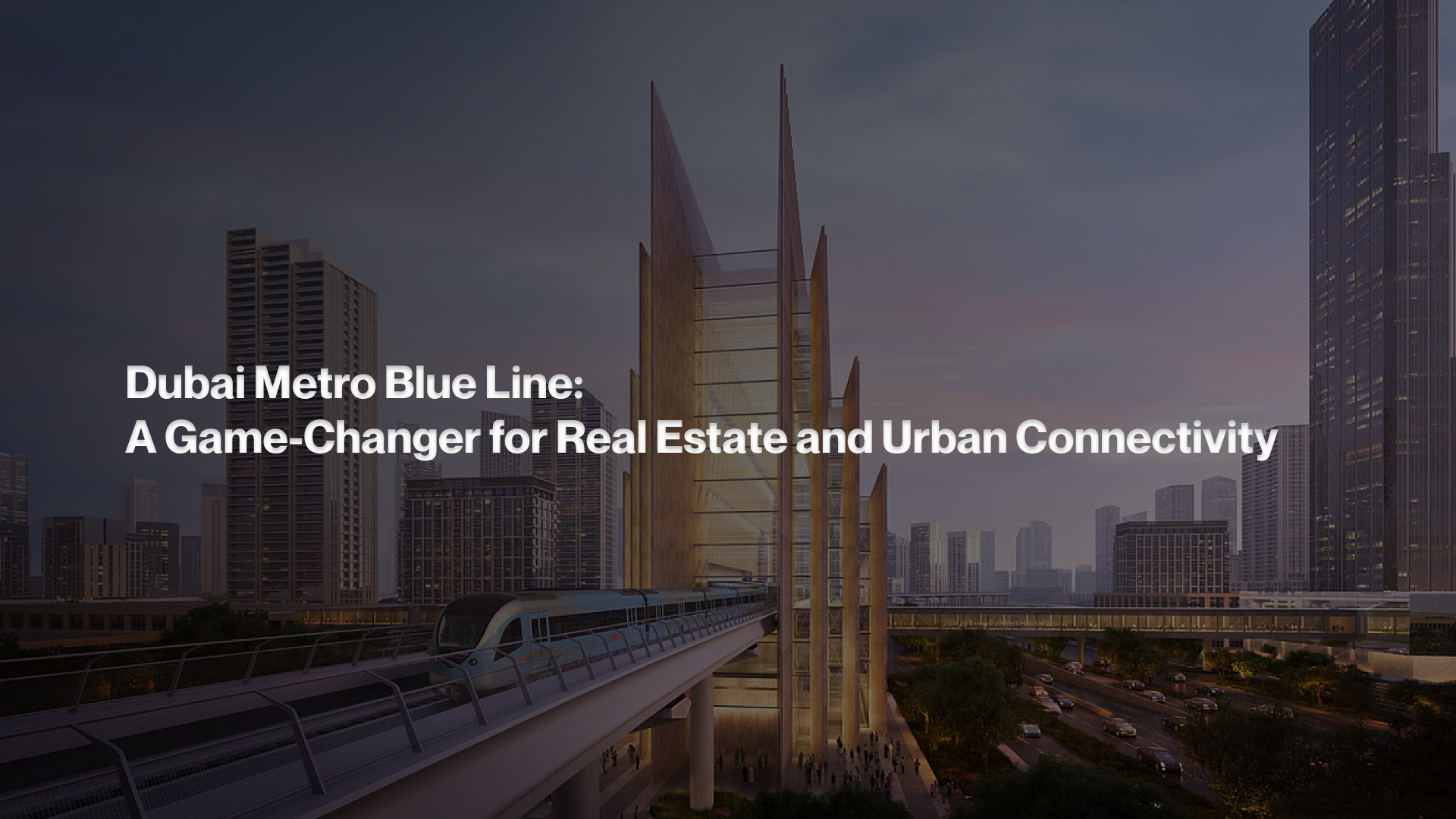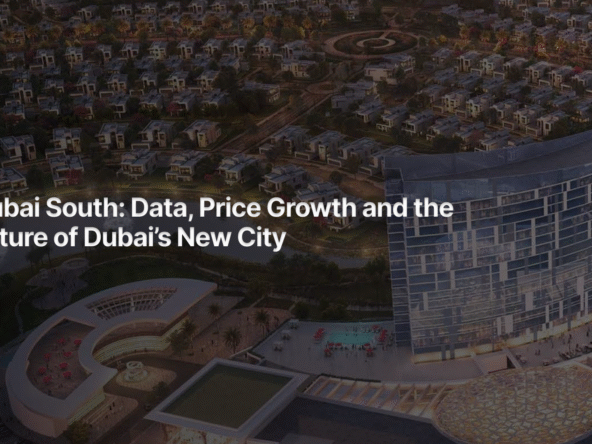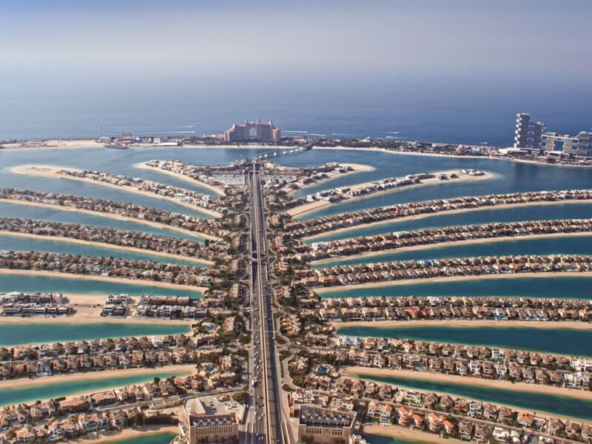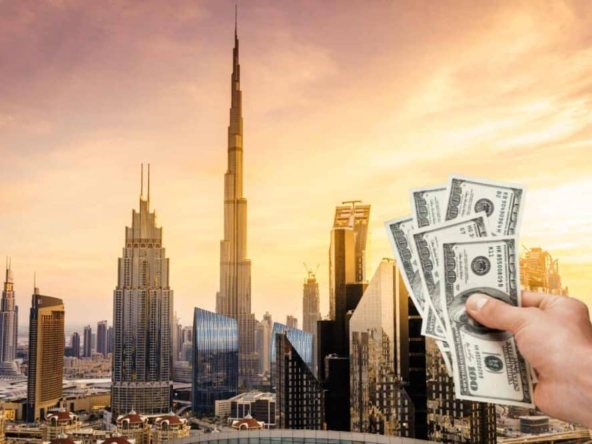The Dubai Metro Blue Line is poised to revolutionize urban transportation and reshape the real estate landscape in Dubai. Announced as part of Dubai’s ambitious infrastructure expansion, this new metro line promises not only enhanced connectivity across the city but also a significant boost to property values, residential appeal, and commercial growth in its vicinity.
The Blue Line, with an estimated completion around 2029, will span key areas of Dubai, connecting Dubai International Airport (DXB) to Mirdif, International City, Silicon Oasis, Academic City, and further into Dubai Creek Harbour. This extensive coverage across developing zones positions the Blue Line as a transformative force in urban planning and real estate investment.
Key Features of the Dubai Metro Blue Line
Strategic Route for Enhanced Connectivity
One of the most crucial elements of the Blue Line is its strategically planned route, designed to alleviate traffic congestion and provide seamless east-west connectivity. While Dubai’s Red and Green Lines cover the primary business and residential districts, the Blue Line will link underserved areas, allowing smoother travel for thousands of commuters daily.
Key planned stations include:
-
DXB Airport Terminal 1 and 3
-
Mirdif City Centre
-
International City
-
Silicon Oasis
-
Dubai Academic City
-
Ras Al Khor
-
Dubai Creek Harbour
This network ensures that both residential neighborhoods and commercial hubs are better integrated into the mass transit system, reducing commute times and encouraging sustainable travel habits.
Integration with Existing Metro Lines
The Blue Line will be fully integrated with the Red and Green Lines, making intermodal transfers efficient and user-friendly. The interchange stations will create multi-point access for passengers, contributing to higher ridership and ease of use. This transport ecosystem not only strengthens Dubai’s smart city credentials but also supports long-term urban mobility planning.
Real Estate Boom Along the Blue Line
Increased Property Demand in Emerging Areas
With direct metro access comes heightened demand for real estate. Properties near metro stations tend to command a premium due to their accessibility, and the Blue Line will be no exception. Mirdif, International City, Dubai Silicon Oasis, and Academic City, traditionally considered mid-tier or emerging markets, will witness a surge in interest from investors and end-users alike.
The areas along the Blue Line are projected to experience:
-
Increased rental yields
-
Capital appreciation of residential units
-
Demand for mixed-use developments
-
Growth of co-working and commercial spaces
Investors eyeing long-term gains are already positioning themselves in neighborhoods like Dubai Creek Harbour and Ras Al Khor, where development synergy between transport and real estate is most pronounced.
New Opportunities for Developers
For developers, the Blue Line presents a golden opportunity to launch transit-oriented developments (TODs). These are high-density, mixed-use projects designed around metro stations, encouraging walkability, reducing car dependency, and promoting sustainable urban living.
Developers focusing on:
-
Affordable housing
-
Luxury lifestyle residences
-
Commercial office parks
-
Smart buildings
will find ample demand and policy support, especially in areas like Dubai Silicon Oasis, where innovation and infrastructure converge.
Economic and Social Impacts of the Blue Line
Boost to Commercial Activity
The Blue Line is expected to accelerate economic activity by improving access to business districts. Retail spaces, office hubs, and service industries will benefit immensely from increased footfall and shorter travel times. Small and medium enterprises (SMEs) in suburban areas will gain exposure to a broader customer base and skilled workforce.
Mirdif and Academic City, traditionally residential zones, will now attract commercial ventures such as:
-
Business centers
-
Healthcare clinics
-
Educational institutions
-
Retail outlets and food courts
Job Creation and Workforce Mobility
A well-connected metro system boosts job creation in multiple sectors—construction, transportation, retail, real estate, and hospitality. Moreover, improved connectivity enhances workforce mobility, enabling more people to commute across the city with ease. This inclusivity supports economic diversification, a pillar of Dubai’s long-term vision.
Environmental and Urban Sustainability Benefits
Reduction in Traffic Congestion and Emissions
The Blue Line will significantly contribute to reducing vehicular traffic in densely populated areas. By encouraging public transport over private car use, Dubai will cut down on:
-
Carbon emissions
-
Noise pollution
-
Traffic accidents
This aligns with the city’s Dubai 2040 Urban Master Plan, emphasizing green infrastructure and sustainable living.
Smart Urban Development
With the Blue Line, Dubai’s vision of smart, connected, and livable cities takes a bold step forward. The integration of AI-powered transport systems, real-time tracking, and contactless payment will enhance commuter experiences and streamline daily travel.
Urban planning around the metro stations will focus on:
-
Pedestrian-friendly streets
-
Cycling lanes
-
Public parks and open spaces
-
Community hubs
Impact on Tourism and Airport Access
Seamless Access to DXB Airport
The Blue Line’s link to Dubai International Airport terminals is a massive win for tourism and international business. Visitors arriving in Dubai will have direct, cost-effective access to key parts of the city via the metro—no need for taxis or rental cars.
This benefits:
-
Short-stay tourists
-
Business travelers
-
Airport staff
-
Transit passengers
Moreover, enhanced metro access can lead to increased hotel development around terminal areas and airport-connected zones, boosting the hospitality industry.
The Blue Line and Dubai’s Vision 2040
Dubai’s strategic urban blueprint, the Dubai 2040 Urban Master Plan, places a strong emphasis on smart mobility, sustainable growth, and integrated infrastructure. The Blue Line supports these goals by:
-
Promoting public transportation
-
Encouraging urban decentralization
-
Supporting real estate innovation
-
Elevating quality of life
By integrating transportation with urban development, Dubai ensures that its future growth is balanced, environmentally responsible, and investment-friendly.
Conclusion: A Future-Oriented Investment Landscape
The Dubai Metro Blue Line is not just another infrastructure project—it is a catalyst for real estate growth, urban regeneration, and sustainable mobility. Investors, developers, and residents alike stand to benefit from its launch.
Whether you’re looking to buy a home, invest in commercial property, or develop transit-oriented communities, now is the time to explore the emerging property corridors along the Blue Line.
The Dubai Metro Blue Line isn’t just about faster travel—it’s about a smarter, greener, and more connected urban future.




